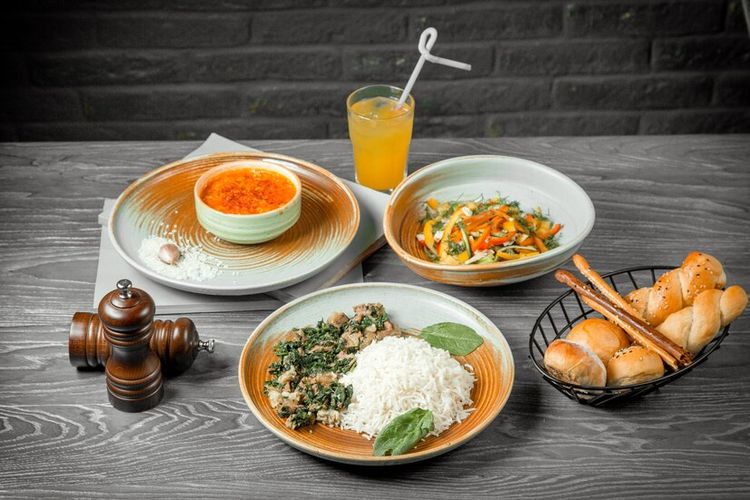KOMPAS.com – Currently, guidelines for nutritious eating in Indonesia are regulated by the Ministry of Health (Kemenkes) through Fill My Plate.
These eating guidelines campaign for the consumption of food that is in accordance with balanced nutritional guidelines.
Eatthink, platforms from Foodsustainesia, helping the millennial generation choose food products and instilling awareness about the importance of sustainability, shares the SELARAS eating guide.
Also read: Minister of Health: Nutrition is a big problem in Indonesia
SELARAS is an abbreviation for Balanced, Local, Natural, Diverse and Conscious.
“We found a gap in healthy food recommendations. For example, the Ministry of Health’s Fill My Plate guide only discusses health aspects. “In fact, diet recommendations need to cover various aspects, including sustainability,” said Jaqualine Wijaya, CEO and Co-founder of Eatthink, quoted from the release received. Kompas.comMonday (14/10/2024).
Jaqualine combines the Isi Priringku concept with overseas diet recommendations with a more local concept so that it is easily accepted by the Indonesian people.
Meanwhile, according to Dionysius Subali, lecturer in Sport Nutrition at the Faculty of Biotechnology, Atma Jaya Catholic University of Indonesia, this eating guide can help encourage healthy intake and food sustainability.
“Not only thinking about being healthy now, but also being healthy in the future. By thinking about environmental aspects, healthy food will continue to be available for the next generation,” said Dion.
The following is a SELARAS nutritious eating guide
1. Balanced nutrition in one day
The concept of balance refers to the nutritional requirements of the food consumed. Don’t just focus on the contents of your plate, but on your consumption in one day.
The need for protein, carbohydrates and fat, which can be met through meat, vegetables and fruit, can be adjusted to the daily meal portion, not just one meal.
 Breakfast illustration.
Breakfast illustration.“We shouldn’t just look at one plate or one meal. What is important is that our nutritional needs are met in one day and we can consistently apply this in the long term,” said Jaqualine.
For example, consuming Nasi Padang during the day means avoiding eating fatty and fried foods in the afternoon.
Also read: 4 nutritious foods for a healthy heart, there is salmon
Next, Dion suggests adjusting food intake to daily physical activity.
“People who work more in the office are better off consuming lots of fruit and vegetables, not carbohydrates. Meanwhile, for people who do a lot of heavy activity, it will be different again. “Balance for these people means consuming lots of carbohydrates,” said Dion.
2. Choose local ingredients that are easy to get
Eating nutritious food doesn’t mean it has to be expensive. You can choose high nutritional food ingredients that are cheap and easy to obtain.
For example, tempeh with nutritional content almost equivalent to beef can be purchased in traditional and modern markets.
 Illustration of foods to reduce uric acid, including tempeh
Illustration of foods to reduce uric acid, including tempehJaqualine said that food ingredients in tropical countries, including Indonesia, are actually more nutritious than non-tropical countries.
“We can find lots of local food whose nutritional value is equivalent to imported products. For example, the omega-3 content in mackerel is even higher than salmon. “It’s just that, because it’s local and cheap, it’s often not looked at,” he said.
Also read: How to Use Sorghum Flour to Make Cakes
There are also purple sweet potatoes which are high in antioxidants and sorghum which is nutrient dense. Both are local food ingredients.






